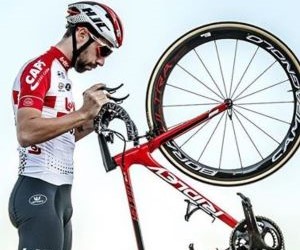Master endurance cycling in tropical climates with effective strategies. Learn hydration, heat adaptation, and training tips for peak performance.
HOW CAN I MEASURE CYCLING PERFORMANCE EFFECTIVELY?
Learn how to measure cycling performance effectively with metrics like power output, heart rate, cadence, and speed. By tracking these data points, cyclists can optimize training, monitor progress, and achieve peak performance safely and efficiently.

Why measuring cycling performance matters
Tracking cycling performance allows riders to understand their fitness, monitor progress, and make informed adjustments to training. Effective measurement helps improve endurance, speed, and efficiency while reducing the risk of injury. By analyzing objective data, cyclists can tailor workouts, identify weaknesses, and set realistic goals.
Benefits of performance tracking
Monitoring performance offers multiple benefits:
Optimized training – Adjust intensity, volume, and recovery based on measurable results.
Goal setting – Establish specific, achievable milestones for improvement.
Motivation – Visual progress encourages continued commitment and discipline.
Identifying strengths and weaknesses
Data-driven performance tracking highlights areas for improvement:
Climbing ability – Track vertical ascent, power-to-weight ratio, and endurance.
Sprint power – Measure explosive efforts for short bursts.
Consistency and endurance – Monitor pace over long rides and fatigue patterns.
Understanding these metrics allows cyclists to prioritize targeted training and enhance overall performance.
Key metrics to measure cycling performance
Several objective metrics provide insights into cycling performance. Combining multiple measurements offers a complete picture of fitness and efficiency.
Power output
Power, measured in watts, is one of the most accurate indicators of cycling performance:
Power meters – Installed on pedals, cranks, or hubs to measure real-time output.
Functional Threshold Power (FTP) – Maximum sustainable power over one hour, key for training zones.
Peak and average power – Helps track sprint ability and overall endurance.
Heart rate monitoring
Heart rate reflects cardiovascular effort and recovery:
Heart rate zones – Determine intensity levels from warm-up to maximal effort.
Recovery tracking – Monitor heart rate variability to assess fatigue and adaptation.
Combined analysis – Compare heart rate and power to identify efficiency improvements.
Cadence and pedal efficiency
Cadence, measured in revolutions per minute (RPM), indicates pedaling efficiency:
Optimal cadence – Helps balance speed, endurance, and muscular fatigue.
Pedal smoothness – Power meters can provide analysis of left-right balance and pedal stroke efficiency.
Adaptation for terrain – Adjust cadence for climbs, sprints, or flat roads.
Speed and distance
While traditional, speed and distance remain important for performance assessment:
Average speed – Monitors overall ride pace.
Segment performance – Analyze performance on specific climbs or flat sections.
Distance covered – Helps track endurance progress over time.
Training tools and technology for performance tracking
Modern technology allows cyclists to collect and analyze performance data accurately and efficiently.
Cycling computers and GPS devices
These devices track speed, distance, elevation, and navigation:
Real-time feedback – Helps adjust effort during rides.
Route mapping – Plan challenging or scenic routes and compare performance across rides.
Integration – Sync with heart rate monitors and power meters for holistic data.
Smart trainers and indoor setups
Indoor training allows precise control of intensity and metrics:
Simulated terrains – Replicate climbs, sprints, and intervals.
Structured workouts – Follow training plans based on power and heart rate targets.
Data tracking – Record cadence, power, and heart rate for later analysis.
Performance apps and software
Digital platforms enhance analysis and progression:
Ride analytics – Detailed metrics and segment comparisons.
Training plans – Adaptive programs based on performance data.
Community sharing – Benchmark against peers and track competitive progress.
YOU MAY ALSO BE INTERESTED






